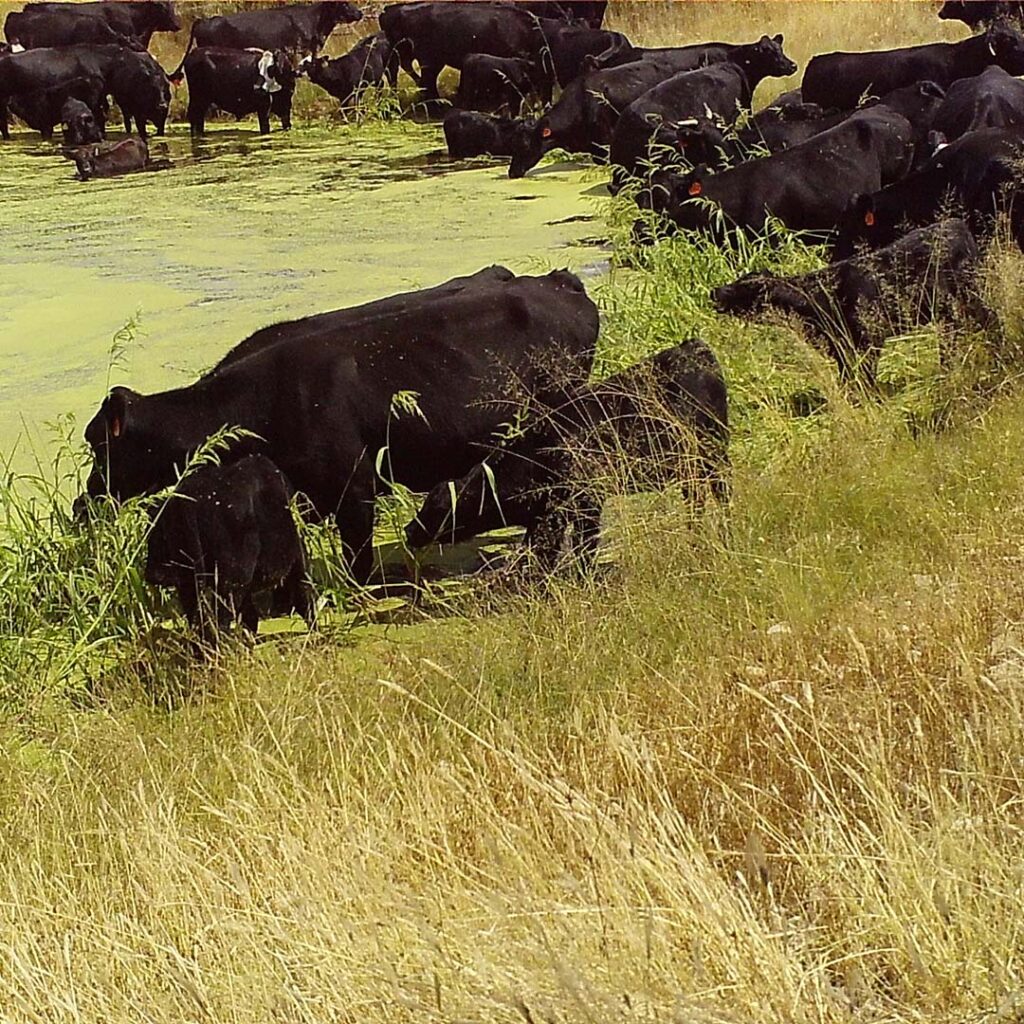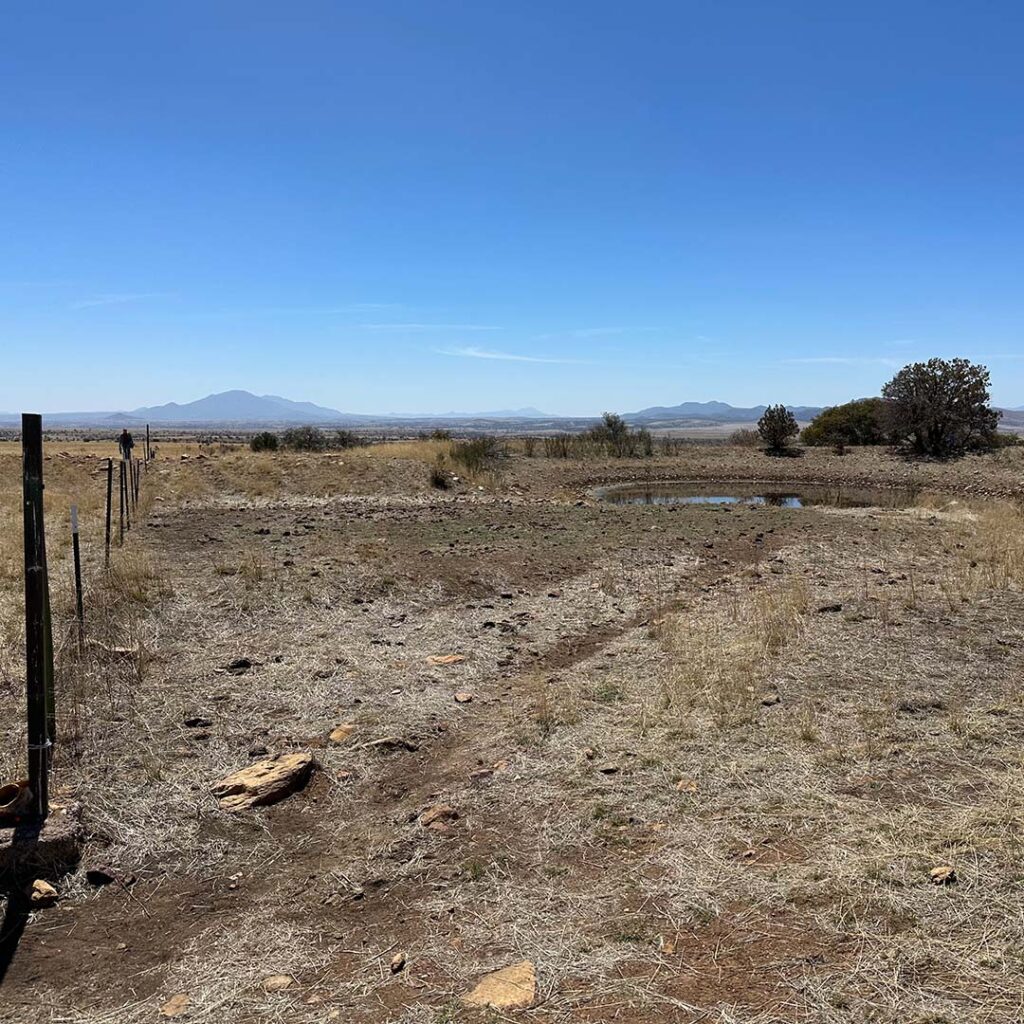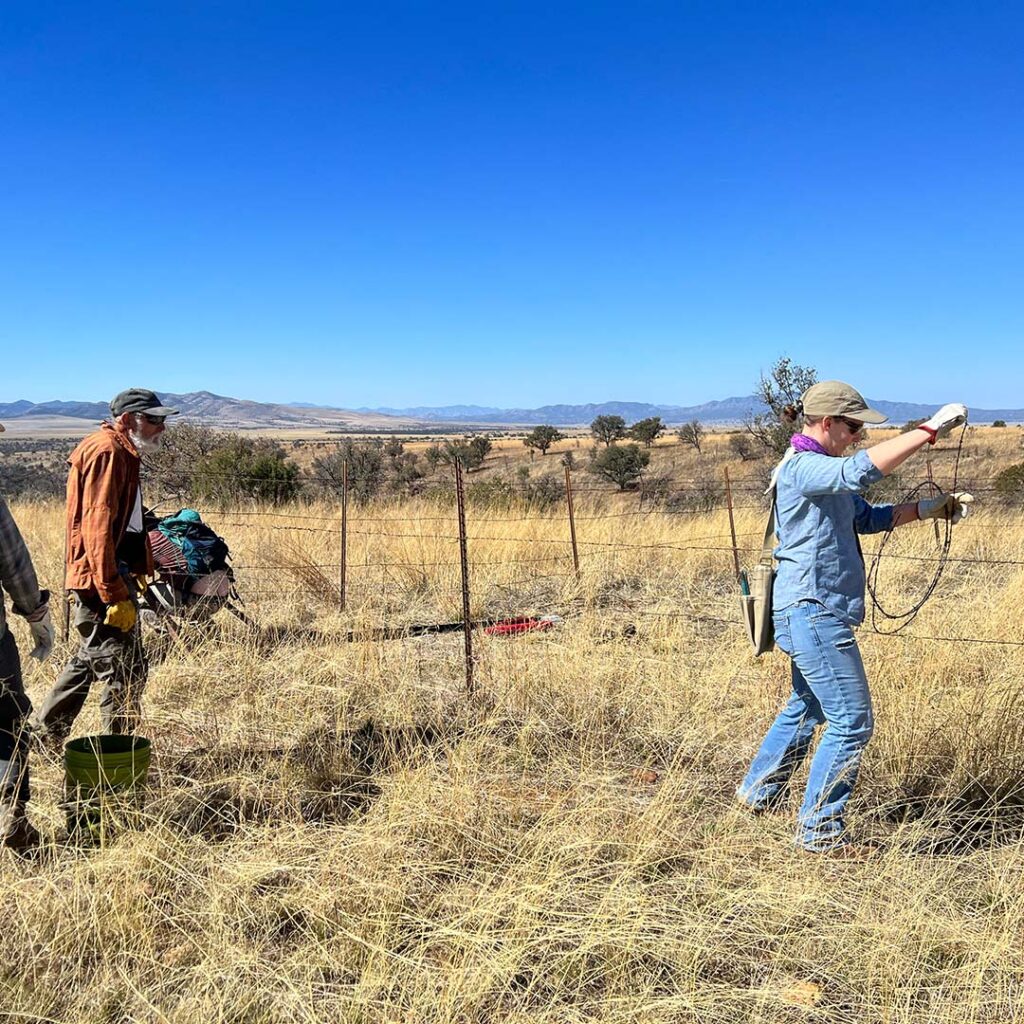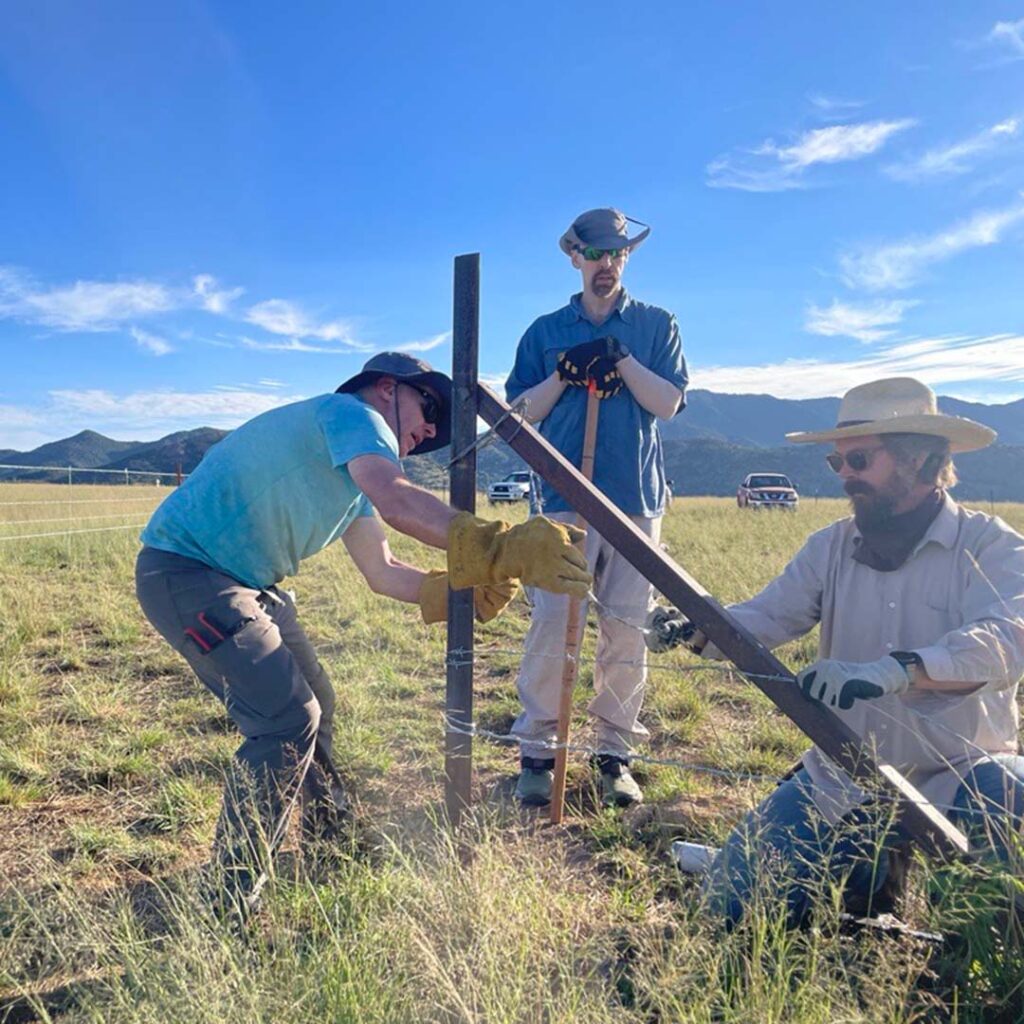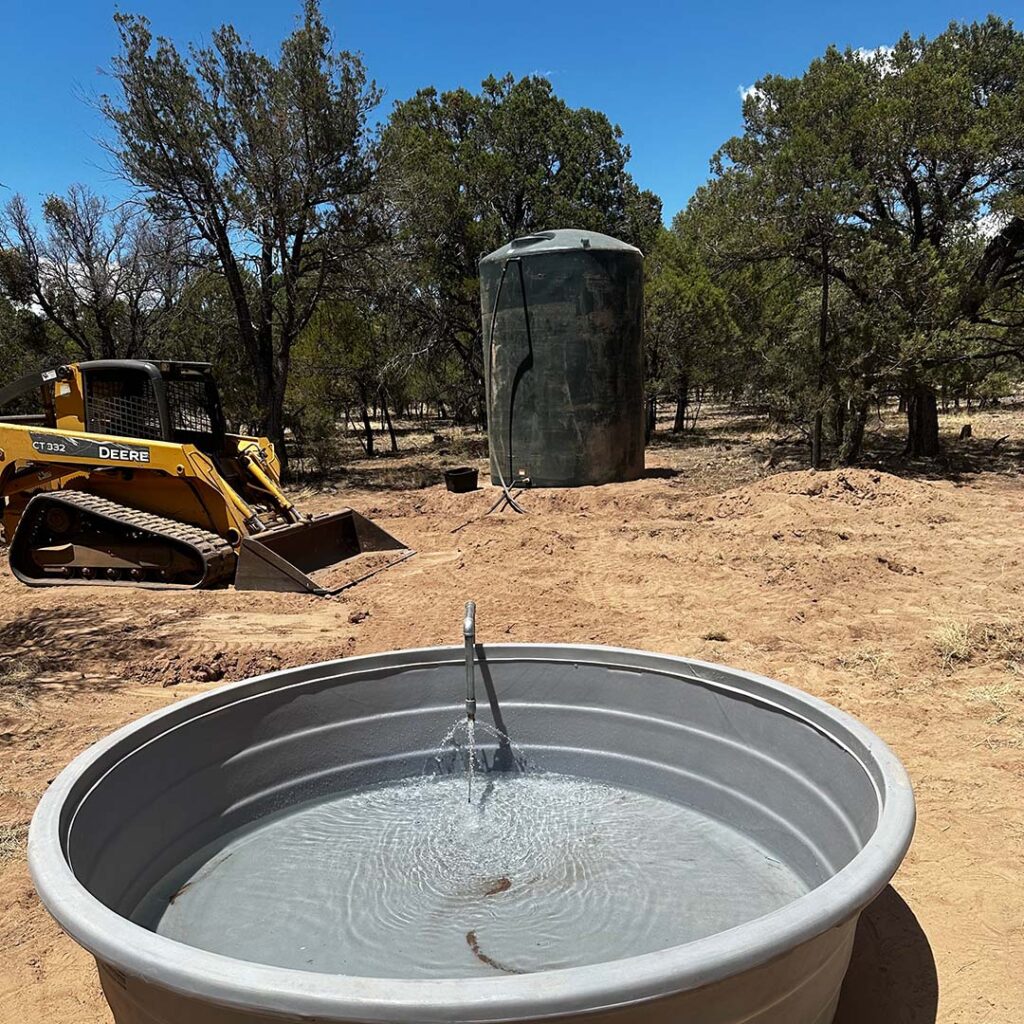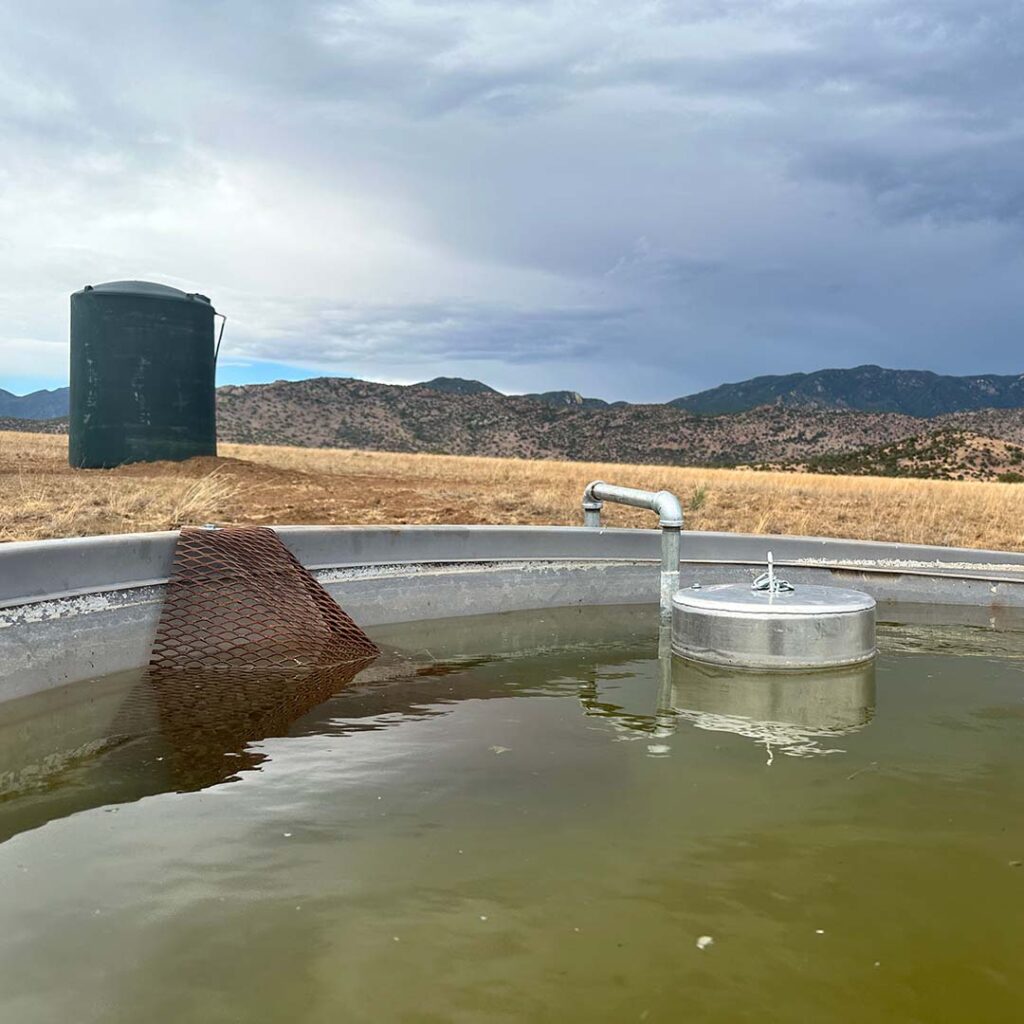
In 2021 the Sierra Vista district of the Coronado National Forest approached Sky Island Alliance with a project idea to improve water sources for wildlife in the southwestern foothills of the Huachuca Mountains. The biologist for the district wanted to create better habitat for Chiricahua leopard frogs and other wildlife by excluding cattle from three different earthen stock ponds: Mesa Tank, Joaquin Tank, and Lone Mountain Tank. Of course, this is in the area of our Border Wildlife Study, and we had been looking for ways to improve the quality of the corridor’s habitat, so we jumped at the chance!
We set out to not only improve the water resources, but also to monitor cattle and wildlife use of the stock tanks throughout the project. To do this, we set up trail cameras at each of the ponds with the hope that by excluding cattle and letting the ponds recover, we’d be able to document more wildlife use of the ponds after the removal of the cattle and as the pond habitat improved.
Fortunately, all three of the stock tanks were already fenced to one degree or another. After surveying each site, we found that the fence at one of the tanks in particular (Mesa) was in very poor shape. We knew we wanted to replace that fence and make sure the new one was friendly for wildlife.

Over the course of two weekends — March 24-26 and Sept. 15-17, 2023 — Sky Island Alliance volunteers were able to rebuild the 0.6 miles of fence surrounding Mesa Tank at the edge of the San Rafael grassland. We removed what was left of the old four-strand barbed-wire fence and replaced it with wildlife-friendly fence consisting of a smooth top and bottom wire, with two strands of barbed wire between them. The smooth wire on the top and bottom ensures that animals jumping over the fence, or passing under it, aren’t caught or injured by barbs. To further protect wildlife, the top wire was placed at least 12 inches above the topmost barbed wire to make sure jumping animals don’t get their legs caught between the wires. Additionally, the bottom wire was lifted to at least 16 inches from the ground to allow pronghorn and other animals to safely pass under the fence.
The next major piece of this project was to provide other sources of water for cattle so they wouldn’t be pushing through the fences around the ponds to slake their thirst. To do that, we needed to install water troughs and storage tanks near the ponds, as well as pipelines to bring them water.
This part required much more coordination with the Forest Service to make sure our work wouldn’t harm any listed species or damage cultural resources. Finally, after months of work by the Forest Service to ensure the best outcomes for people and wildlife, and working with our contractor to find a good time to perform the work, the pipeline, storage tank, and water trough installations began.
With additional support for the project from the Water for Wildlife Foundation and USDA’s Secure Rural Schools and Community Self-Determination Act, on May 7 we began to install the troughs, tanks, and pipelines. All told, over 3.5 miles of pipe were buried to connect three new cattle troughs and two new storage tanks to a nearby well. All the new water sources were installed near enough to the existing ponds so the cows would easily find them, but far enough so that cows hanging out near the water won’t be causing excessive damage to the recovering ecosystem.
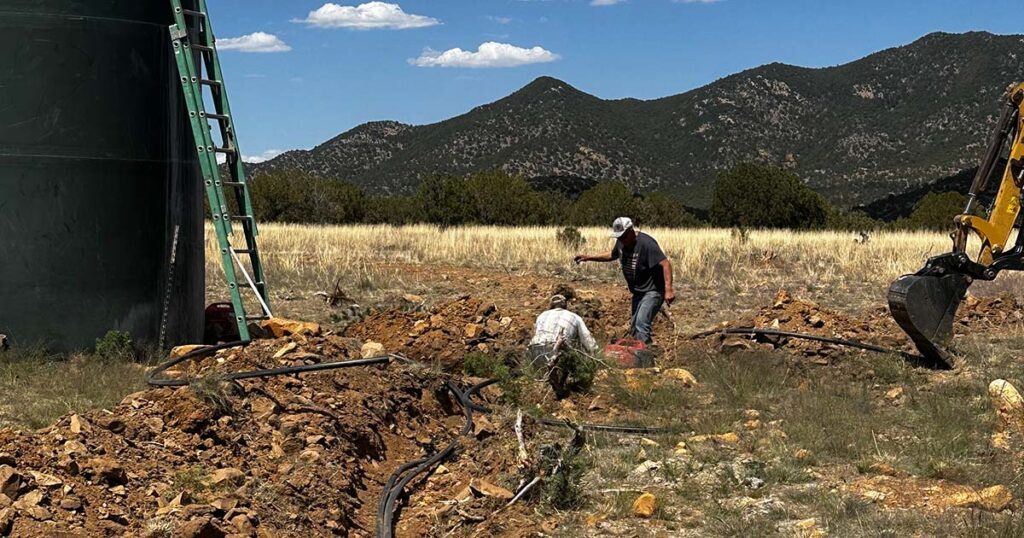
By May 18, 2024, all three new water troughs were filling with water, and the next step was to install escape ramps in each trough. These were installed by SIA staff so that any small animals that found their way into the troughs could easily escape. In the coming months we’ll be installing external ramps of stone and concrete at each of the troughs so that smaller animals can easily access the water there as well.
As far as camera monitoring goes, we have thousands of wildlife detections since we began this project, and we’ve identified 17 species of mammals and 22 bird species at the ponds so far. Of note: American black bear, mountain lion, Gould’s turkey, white-tailed deer, and the rare white-tailed kite have all visited the water prior to the project’s completion. Our intention is to continue the monitoring work for at least another year so we can see if our efforts pay off for wildlife. In another year or so, we’ll analyze all our camera data to see if there are any significant trends in the numbers and frequency of cattle and wildlife using the ponds.
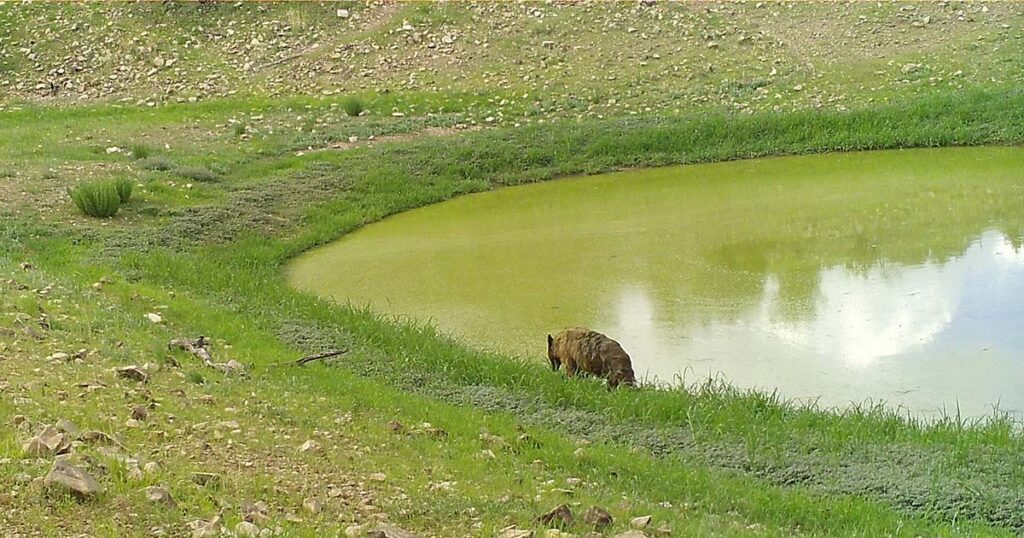
If you’d like to help us install ramps at the new cattle troughs, keep an eye on our Upcoming Events page on our website where we’ll be posting a trip down there soon.

